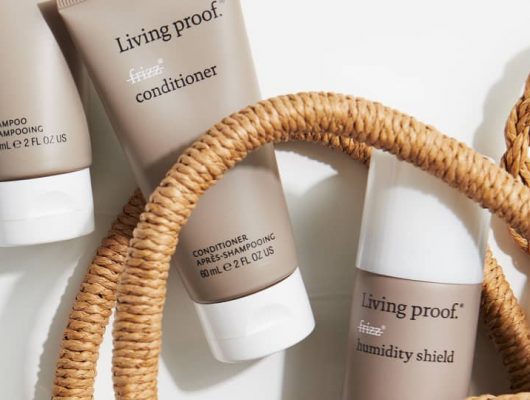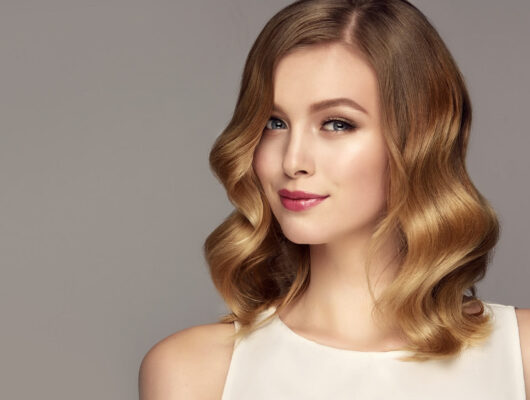
How to Get a Healthy Scalp: 10 Tips from Haircare Experts
When you think about caring for your hair, what comes to mind? Maybe it’s using leave-in conditioner to keep your strands feeling soft and smooth or applying a heat protectant spray to avoid damage from styling tools. But what about scalp care?
Though often overlooked, maintaining a healthy scalp is essential to your hair’s overall health and can actually impact its growth, texture, thickness, and shine. In this article, you’ll learn why scalp health is so important, common signs of an unhealthy scalp, and how to take care of your scalp.
The scalp’s role in hair health
Healthy hair starts with a healthy scalp. There’s substantial scientific literature to support the relationship between scalp condition and hair quality, with one research study finding that stress to the scalp can cause cuticular cells — that is, skin cells that make up the outermost layer of the hair shaft — to be less flexible. This diminished flexibility makes hair more likely to shed or break. There’s also evidence to suggest that proper scalp care can help promote hair growth and retention.
The key to maintaining a healthy scalp is to take good care of your scalp’s microbiome. Your scalp’s microbiome is the ecosystem of microorganisms, including bacteria, fungus, and parasites, that live on the surface of your scalp and inside the follicle. Although that might sound alarming, these microorganisms play an essential role in scalp health, acting as the first line of defense against harmful microbes. For example, scientific research suggests that the presence of the bacterial species Propionibacterium acnes is linked to a healthy scalp.
What does a healthy scalp look like?
A healthy scalp should…
- Have an adequate amount of sebum, the natural oil produced by the sebaceous glands that helps protect the scalp and maintain a healthy pH balance
- Be clean and free of product buildup, dirt, and dead skin
- Be free from flakiness, redness, or inflammation
- Not feel itchy or uncomfortable
- Not have any unpleasant odor
- Promote healthy hair growth
Symptoms of an unhealthy scalp include…
- Excessive oil production
- Dryness, flakiness, and/or itching
- Redness, inflammation, irritation, and/or scalp tenderness
- Bumps, acne, cysts, and/or boils
- Unpleasant odor
- Thinning hair or hair that breaks easily
- In some cases, unhealthy scalp can lead to more severe conditions, such as fungal infections, psoriasis, seborrheic dermatitis, folliculitis, and alopecia.
What causes an unhealthy scalp?
Unfortunately, there’s no one, clear-cut answer to this question. There are many reasons why you may be experiencing a dry, itchy, or irritated scalp, including:
- Environmental factors:
- Environmental factors such air pollutants, dust, pollen, and cigarette smoke can all have a major impact on scalp health. Common symptoms of scalp damage due to environmental factors often include itching, dandruff, excessive sebum production, inflammation, and hair follicle sensitivity.
- Sun exposure:
- Research shows that transepidermal UV radiation of the scalp — that is, prolonged sun exposure — can have negative effects on hair follicle homeostasis and cause epidermal damage. If hair follicle homeostasis is thrown out of balance, it can harm the scalp’s microbiome, leading to hair loss, thinning, and/or reduced sebum production. Epidermal damage can also impact the skin’s natural barrier and, in severe cases, lead to skin cancer.
- Chemical exposure:
- Whether they’re occupational chemicals or even treatments at your local salon, routine exposure to chemicals and other toxins can lead to an unhealthy scalp. Although the degree of damage varies depending on a few different factors, including the type and concentration of the chemical and frequency and duration of exposure, the most common side effects of chemical exposure include redness, dryness, itching, flaking, inflammation, and hair loss or thinning.
- Allergies:
- An itchy or irritated scalp is a common side effect of seasonal allergies and allergic reactions to hair products or treatments. Although a little irritation isn’t cause for alarm, prolonged irritation can lead to hair follicle damage and even hair loss.
- Stress:
- High cortisol levels caused by stress are a common culprit for scalp-related issues. Stress can increase cortisol production in the adrenal glands; the resulting high cortisol levels can cause inflammation in the body, including the scalp, which can lead to dryness, itchiness, and flaking. Additionally, heightened cortisol levels can lead to excessive sebum production, clogging hair follicles and causing greasy hair and scalp acne.
- Nutritional deficiencies:
- What you eat can actually affect the health of your scalp and your hair. Omega-3 fatty acids — which are commonly found in fish, nuts, seeds, plant oils, and fortified foods — can help balance sebum production and maintain scalp moisture, preventing dryness, itchiness, flakiness, and dandruff. Multiple studies also suggest that omega-3 fatty acid supplements may help promote hair growth. Without this essential nutrient in your diet, you’re at greater risk of scalp irritation.
- Hormonal fluctuations:
- Cortisol is just one of the hormones that can impact scalp health. Research shows that fluctuations in other hormones such as estradiol, progesterone, estrogen, and various thyroid gland hormones can affect hair follicles, which can lead to either hair loss or excessive hair production (known as hirsutism).
- Genetics:
- Just as you may have inherited a beloved relative’s eyes or smile, you can also inherit common scalp conditions, including psoriasis, eczema, alopecia, or seborrheic dermatitis. Genetics also play a role in your hair’s growth rate and pattern and in hair thickness and texture.
How to get a healthy scalp: 10 scalp health tips
Want to improve your scalp’s health? Follow these tips — provided by our team of haircare experts — to achieve and maintain a healthy scalp:
1. Get to know your hair
First thing’s first: To properly treat both your scalp and your hair, you need to understand when they feel their best — and their worst. You can ask yourself these questions to establish a baseline:
- What is my hair type and texture? Is it curly, wavy, or straight? Is it thick or fine?
- What is my scalp type? Is it oily, dry, or a combination of the two?
- What scalp-related issues am I experiencing? Is it excessive oil production, dryness and itchiness, redness and inflammation, flakiness, or something else?
- What are my hair goals? Beyond getting a healthier scalp, do I want to promote hair growth, increase volume, or reduce frizz?
- Which products have worked well for me in the past? Which ones didn’t?
- Do I have any known allergies or sensitivities to certain products or ingredients?
- What is my lifestyle like? Do I have time for a multi-step haircare routine, or do I need something simple and low-maintenance?
Getting to know your scalp and hair and what they respond best to can take some trial and error, but once you’ve figured it out, you can start to pinpoint issues and create a plan to take care of your scalp.
2. Stick to a consistent wash routine
An important part of getting to know your hair is understanding how frequently (or infrequently) you need to wash it with shampoo and conditioner. If you’re a day-to-day washer and are experiencing dryness, itchiness, or irritation on your scalp, you may be washing your hair too often. This can strip your scalp of the natural oils and sebum it needs to stay healthy. Incorporating a dry shampoo into your haircare routine can help your hair feel clean while extending the time between washes.
That doesn’t mean that infrequent washers are off the hook, though. Washing your hair too infrequently can cause oil and product buildup on the scalp, keeping your hair from looking and feeling its best. Once you’ve determined how often you should wash your hair, stick to that schedule.
3. Keep buildup at bay
Speaking of scalp buildup, buildup from products, pollution, or even hard water can suffocate hair follicles, preventing them from obtaining the moisture and protein they need to thrive.
An occasional detox is a great way to keep buildup at bay. When searching hair products online or in-store, you may notice that there are quite a few clarifying shampoos on the market. You’ll want to choose one that won’t strip your scalp or strands but will, instead, gently remove buildup and hydrate your hair. It’s also important to choose styling products free from silicones, sulfates, parabens, and other harmful ingredients that can build up on your scalp.
4. Brush Your Hair
Brushing your hair regularly not only keeps it looking and feeling nice, it’s actually an important part of scalp care and contributes to scalp health. Your scalp naturally produces the oils and sebum your hair needs to stay healthy. When you brush your hair, you carry those oils from the root through the length of the hair shaft to the ends, adding natural conditioning and shine.
5. Stay hydrated
You probably already know that drinking water is good for your skin — but it’s good for your scalp, too. Staying hydrated can help prevent loss of skin elasticity and promote circulation and oil production in the scalp, which can help protect against common scalp conditions such as itchiness and irritation. How much water you need to drink to stay hydrated will depend on a few different factors, including your lifestyle and where you live, but the general recommendation is four to six cups per day.
6. Treat your scalp right
Everyone’s scalp is different and requires different things to stay healthy.
For example, if you’re experiencing scalp dryness and all the side effects that come with it, you may want to consider a leave-in treatment to moisturize your scalp and help restore its microbiome. If you want to achieve thicker-, fuller-looking hair, you might consider a nighttime treatment to fight the effects of environmental stressors. You may even want to use such products together to combat dryness and hair thinning at the same time.
When evaluating treatments, be sure to look for products formulated with ingredients such as jojoba esters and vitamins that nourish and moisturize your scalp, while restoring the skin barrier for prolonged, balanced hydration.
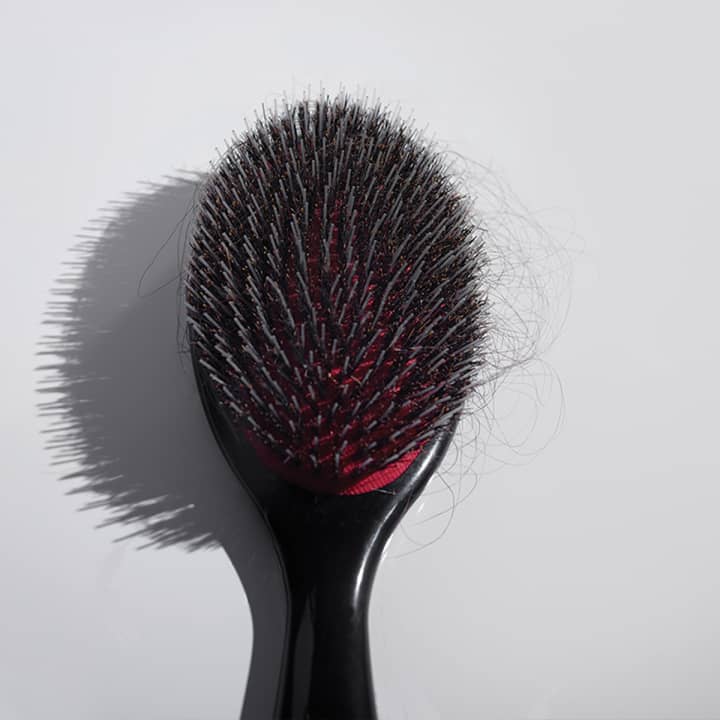
If you are searching for the best dry scalp remedies that also help prevent thinning hair, you can use both treament products together.
7. Massage your scalp
Good circulation can support scalp health by delivering oxygen and key nutrients to hair follicles. You can increase blood flow and stimulate the skin cells in your scalp by massaging it with your fingertips or with a specialized massager. Massaging a scalp when applying products and treatments can even enhance their performance — plus, who doesn’t enjoy a good scalp massage?
8. Avoid harsh chemicals
Certain surfactants — chemical compounds often used as cleansing agents in hair products — have been shown to be irritating to the skin and scalp. To maintain a healthy scalp, it’s best to stick with milder-sulfate free cleansers.
Additionally, leave hair coloring and chemical processing to the professionals. They know best how to minimize product contact with your scalp to reduce irritation and can ensure that it’s effectively rinsed out after treatment. If, however, you prefer to bleach or color your hair at home, be mindful not to leave the treatment on for any longer than recommended and rinse well to make sure nothing is left behind that could irritate your scalp.
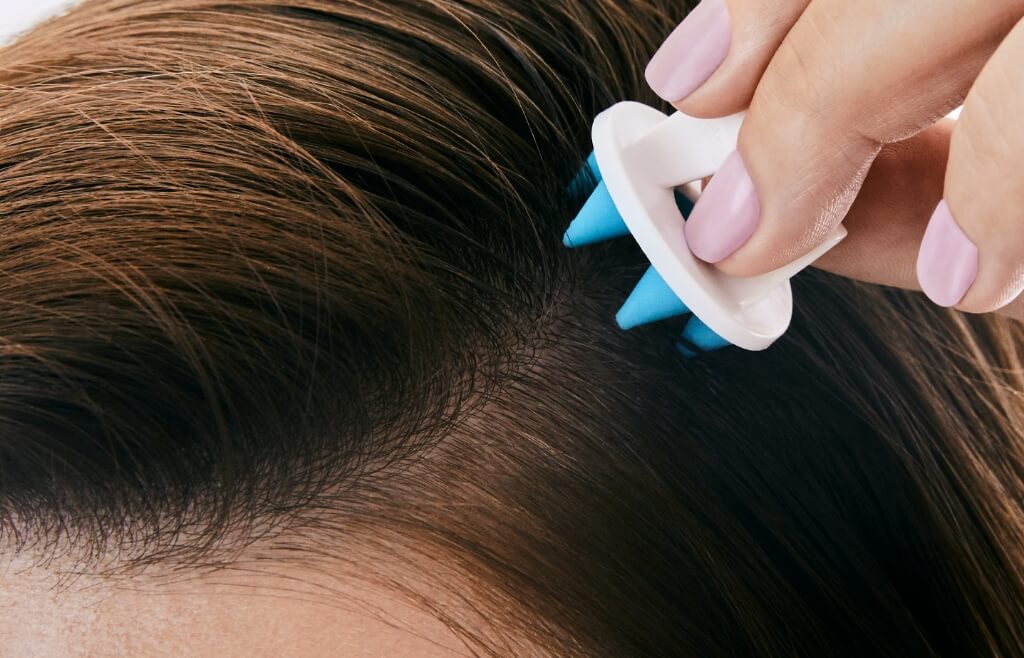
9. Avoid excessive heat styling
As much as you may love the look of pin-straight hair or sleek waves, too much heat styling — particularly with a blow dryer — can dry out your scalp, causing itchiness, irritation, and, in some cases, dandruff. Try to space out heat styling when possible and to avoid direct exposure to heat. If you use a concentrating nozzle on your dryer, make sure it’s directed away from the scalp down the length of your hair to reduce exposure. Finally, as a general haircare tip, be sure to use a heat protectant spray to minimize damage to your strands.
10. Protect your scalp from the sun
UV radiation is a leading cause of scalp irritation and, if left unchecked, can lead to more serious skin conditions. On days when you know you’ll be outside for extended periods of time, apply sunblock to exposed areas or wear a hat to protect your scalp from the sun’s rays.
Maintaining a healthy scalp is just as essential as any other part of your haircare routine. By following these simple scalp care tips — and by using Living Proof’s science-backed Scalp Care collection — you can ensure that your scalp stays happy and healthy, and that your hair always looks and feels its best.
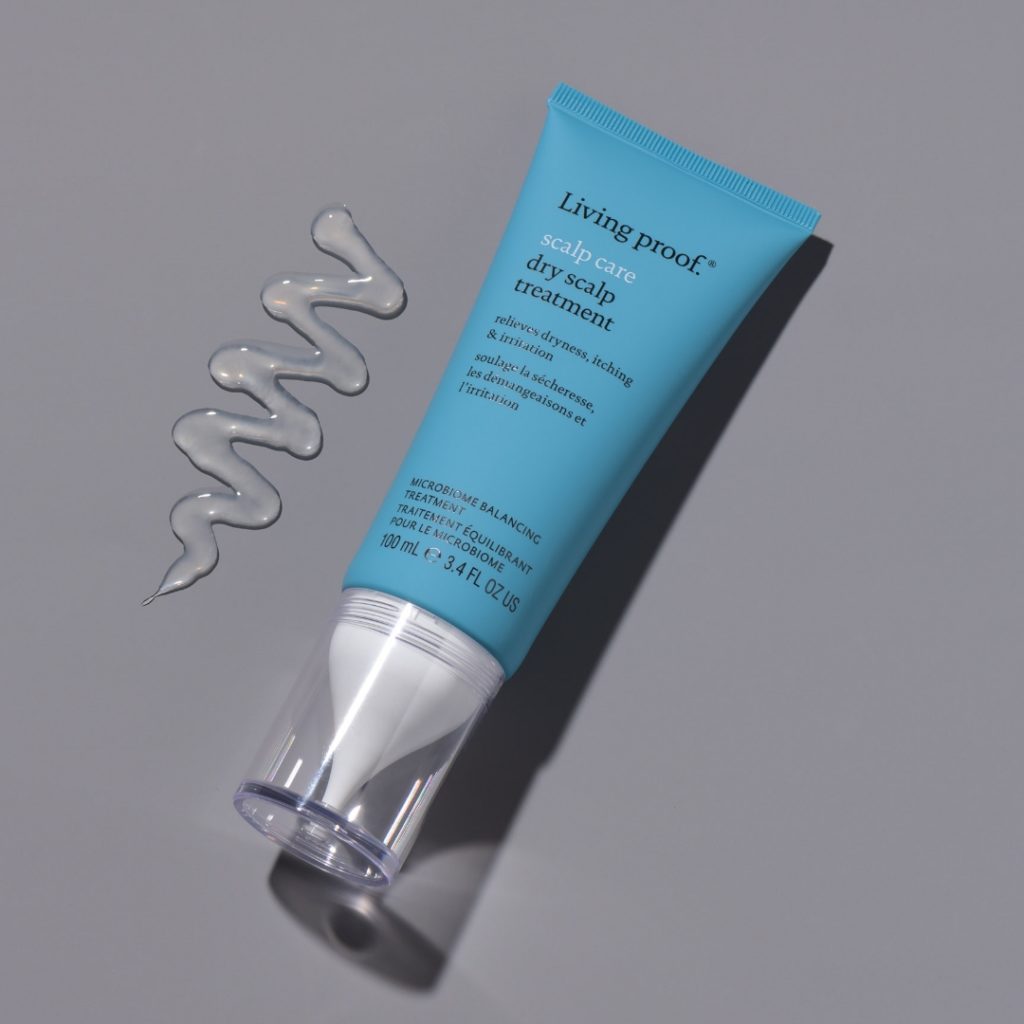
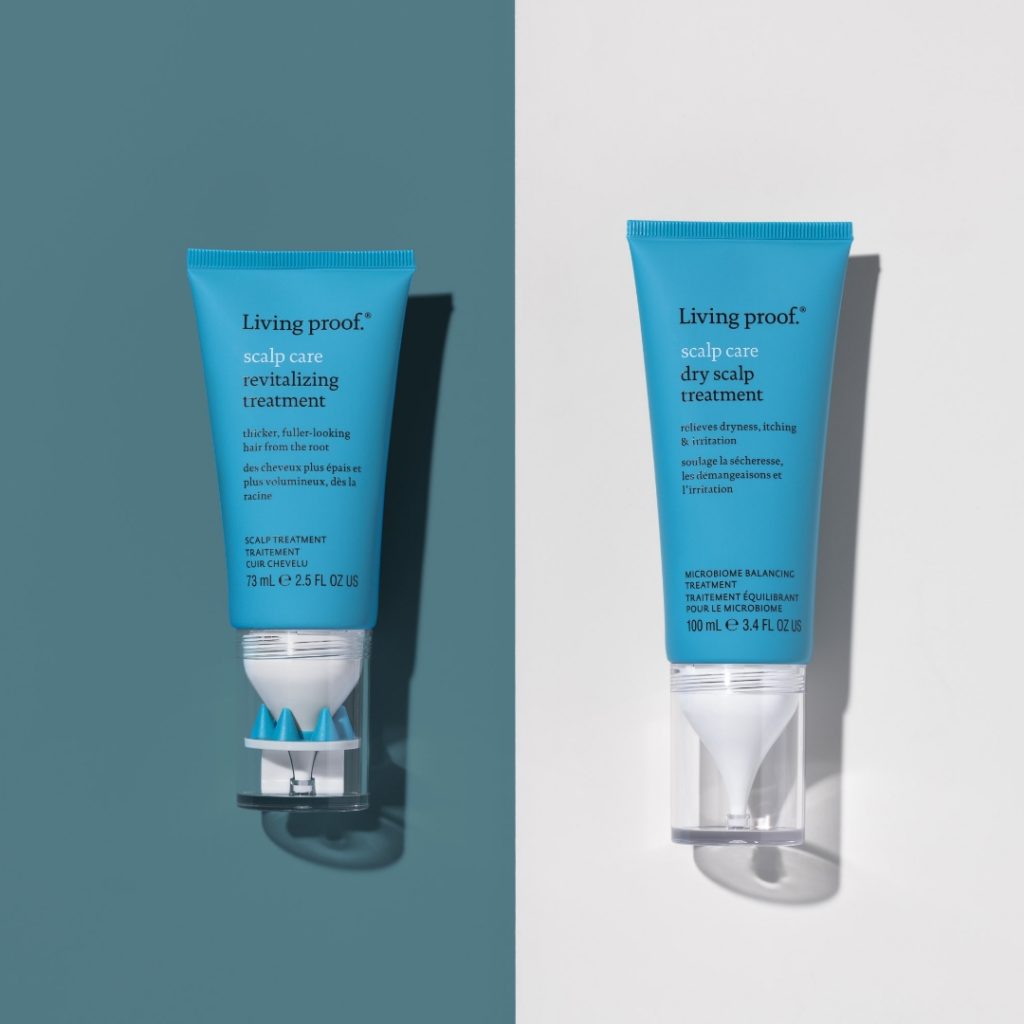
Need help finding the best product for your hair type and texture? Take Living Proof’s Haircare Quiz to get custom recommendations and find the right shampoo and conditioner to achieve your hair (and scalp!) goals.
- International Journal of Cosmetic Science, “Role of scalp health in achieving optimal hair growth and retention, https://onlinelibrary.wiley.com/doi/full/10.1111/ics.12708.”
- International Journal of Trichology, “Scalp Condition Impacts Hair Growth and Retention via Oxidative Stress, https://www.ncbi.nlm.nih.gov/pmc/articles/PMC6369642/.”
- Frontiers in Cellular and Infection Microbiology, “Comparison of Healthy and Dandruff Scalp Microbiome Reveals the Role of Commensals in Scalp Health, https://www.frontiersin.org/articles/10.3389/fcimb.2018.00346/full.”
- Living Proof, “Dandruff vs. Dry Scalp: How to Tell the Difference, https://www.livingproof.com/dandruff-vs-dry-scalp/.”
- Living Proof, “How to Remove Hair Buildup, https://www.livingproof.com/hair-build-up/.”
- Living Proof, “How to Tell if Your Hair is Healthy, https://www.livingproof.com/how-to-tell-if-your-hair-is-healthy/.”
- Living Proof, “10 Common Causes of Oily Hair, https://www.livingproof.com/why-is-my-hair-so-oily/.”
- Hair Therapy & Transplantation, “Understanding Hair Loss due to Air Pollution and the Approach to Management, https://www.longdom.org/open-access/understanding-hair-loss-due-to-air-pollution-and-the-approach-to-management-2167-0951-1000133.pdf.”
- Dermatology, “Association between smoking and hair loss: another opportunity for health education against smoking?, https://pubmed.ncbi.nlm.nih.gov/12673073/.”
- International Journal of Cosmetic Science, “Transepidermal UV radiation of scalp skin ex vivo induces hair follicle damage that is alleviated by the topical treatment with caffeine, https://www.ncbi.nlm.nih.gov/pmc/articles/PMC6850087/.”
- Environmental Health Insights, “Potential Health Effects Associated with Dermal Exposure to Occupational Chemicals, https://www.ncbi.nlm.nih.gov/pmc/articles/PMC4270264/.”
- Chemical Research in Toxicology, “Hair Dye Ingredients and Potential Health Risks from Exposure to Hair Dyeing, https://pubs.acs.org/doi/full/10.1021/acs.chemrestox.1c00427.”
- Vogue, “How Stress Affects Your Scalp—And What to Do About It, https://www.vogue.com/article/stress-scalp-and-what-to-do-about-it.”
- National Institutes of Health, “Omega-3 Fatty Acids, https://ods.od.nih.gov/factsheets/Omega3FattyAcids-Consumer/.”
- International Journal of Molecular Sciences, “Mackerel-Derived Fermented Fish Oil Promotes Hair Growth by Anagen-Stimulating Pathways, https://www.ncbi.nlm.nih.gov/pmc/articles/PMC6164340/.”
- Journal of Cosmetic Dermatology, “Effect of a nutritional supplement on hair loss in women, https://onlinelibrary.wiley.com/doi/10.1111/jocd.12127.”
- Menopause Review, “Nutrition of women with hair loss problem during the period of menopause, https://www.ncbi.nlm.nih.gov/pmc/articles/PMC4828511/.”
- The Journal of the North American Menopause Society, “Reversible alopecia associated with high blood mercury levels and early menopause: a report of two cases, https://pubmed.ncbi.nlm.nih.gov/30939539/.”
- Reyes MD, “The Relationship Of Sugar And Psoriasis, https://www.rreyesmd.com/psoriasis-awareness-month/.”
- National Library of Medicine, “Androgenetic Alopecia, https://www.ncbi.nlm.nih.gov/books/NBK430924/.”
- International Journal of Molecular Sciences, “Hormonal Effects on Hair Follicles, https://www.ncbi.nlm.nih.gov/pmc/articles/PMC7432488/.”
- Living Proof, “Different Types of Curly Hair: Which Do You Have?, https://www.livingproof.com/types-of-curly-hair/.”
- Living Proof, “8 Easy Ways to Get Rid of Oily Hair, https://www.livingproof.com/how-to-get-rid-of-greasy-hair/.”
- Living Proof, “3 Easy Ways to Get Rid of Scalp Buildup, https://www.livingproof.com/3-easy-ways-to-get-rid-of-scalp-buildup/.”
- Living Proof, “Hard Water on Hair: Effects, Signs & Solutions, https://www.livingproof.com/hard-water-hair/.”
- Living Proof, “How to Detox Hair + Maintain Healthy Locks, https://www.livingproof.com/how-to-detox-your-hair/.”
- Living Proof, “All Products, https://www.livingproof.com/shop/more-ways-to-shop/shop-all-products/.”
- Living Proof, Clarifying Detox Shampoo, https://www.livingproof.com/clarifying-detox-shampoo/R1042.html.”
- Nutrition Reviews, “Water, hydration, and health, https://academic.oup.com/nutritionreviews/article/68/8/439/1841926.”
- Harvard Health Publishing, “How much water should you drink?, https://www.health.harvard.edu/staying-healthy/how-much-water-should-you-drink.”
- Living Proof, “Scalp Care Dry Scalp Treatment, https://www.livingproof.com/scalp-care/dry-scalp-treatment/02676.html.”
- Living Proof, “Scalp Care Revitalizing Treatment, https://www.livingproof.com/scalp-care/revitalizing-treatment/02604.html.”
- Living Proof, “Perfect hair Day™ Heat Styling Spray, https://www.livingproof.com/perfect-hair-day/heat-styling-spray/03259.html.”
- Living Proof, “Scalp Care, https://www.livingproof.com/shop/shop-by-collection/scalp-care/.”
- Living Proof, “Haircare Quiz, https://www.livingproof.com/quiz.html.”

